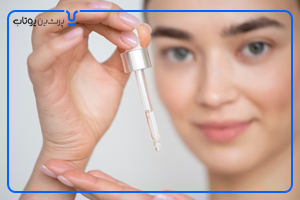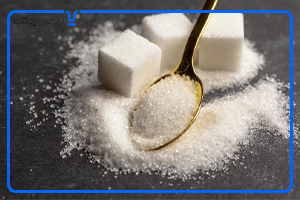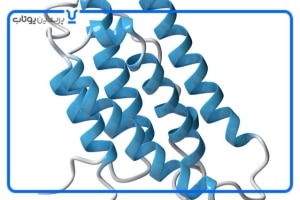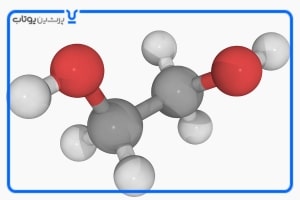کاربردهای مونو پروپیلن گلایکل
کاربردهای مونو پروپیلن گلایکل در ترکیب گسترده ای از صنایع از مواد آرایشی و دارویی گرفته تا کشاورزی، مواد غذایی استفاده می شود. یک ماده مایع مصنوعی است که آب را جذب می کند.
همچنین در ساخت ترکیبات پلی استر و به عنوان پایه ای برای بعضی محلول ها استفاده می شود. طعم کمی شیرین دارد و در برخی موارد به عنوان افزودنی غذایی توسط سازمان غذا و داروی ایالات متحده تأیید شده است.
کاربردهای مونو پروپیلن گلایکل از نظر آزمایشگاهی بسیار پایدار است. نقطه جوش زیاد و از فشار بخار کم برخوردار است. همچنین پروپیلن گلیکول قابلیت حل سایر مواد را دارد و کاملاً محلول در آب است.
این ماده برای جذب آب اضافی و حفظ رطوبت در برخی داروها، مواد آرایشی یا محصولات غذایی کاربرد دارد.
یک حلال برای رنگ ها و طعم های مواد غذایی است. همچنین یک ماده افزودنی مواد غذایی رقیق شده طبقه بندی شده (E1520) است. یک استخراج کننده عالی است و از آن به عنوان رقیق کننده استفاده می شود.
پروپیلن گلیکول برای ایجاد دود مصنوعی یا مه مورد استفاده در تمرینات آتش نشانی و در تولیدات تئاتر کاربرد دارد.
کاربرد های مونو پروپیلن گلیکول
خواص و کاربردهای مونو پروپیلن گلایکل آن را برای بسیاری از کاربردهای خاص در بسیاری از صنایع مختلف کامل می کند.
پروپیلن گلیکول دارای کاربردهای بسیار گسترده ای است و در بسیاری از محصولات از جمله ضد یخ، مواد غذایی، محصولات آرایشی، دارویی، مایعات ضد یخ هواپیما، عطرها و محصولات مراقبت شخصی به عنوان ماده شیمیایی استفاده می شود.
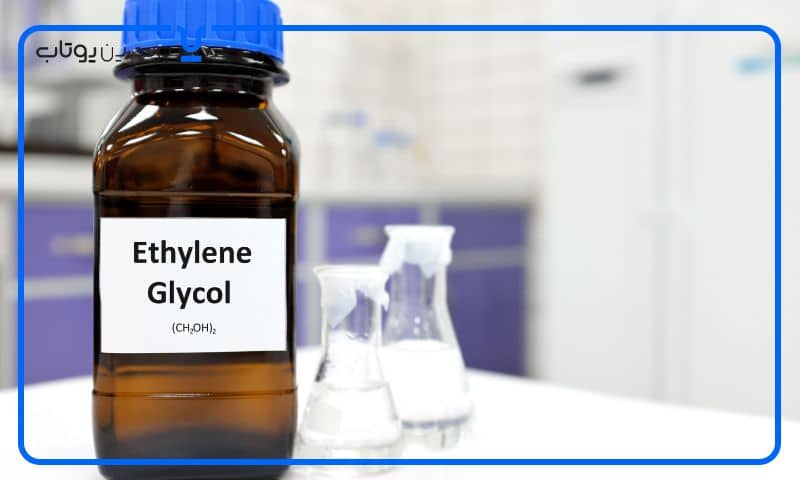
1. صنایع غذایی و نوشیدنی
از نوع درجه یک مونو پروپیلن گلیکول در صنایع غذایی استفاده می شود. این ماده به دلیل خاصیت تثبیت مایع های نامحلول، حلالیت و نگهدارندگی، میزان ماندگاری مواد غذایی را افزایش می دهد.
کاربرد مونو گلیکول پروپیل در صنایع غذایی
هدف از تولید مونوپروپیلن گلیکول در سطح صنعتی حفظ غذاهای فرآوری شده است.
ماده ضد پخت و پز:
به جلوگیری از چسباندن اجزای مواد غذایی به یکدیگر و ایجاد توده هایی مانند سوپ های خشک یا پنیر رنده شده کمک می کند.
آنتی اکسیدان:
ماندگاری مواد غذایی را افزایش می دهد.
حامل:
سایر مواد افزودنی غذایی یا مواد مغذی مورد استفاده در فرآوری مانند رنگ ها، طعم دهنده ها یا آنتی اکسیدان ها را حل می کند.
تقویت کننده خمیر:
باعث تقویت نشاسته و گلوتن در خمیر می شود تا ثبات آن بیشتر شود.
امولسیفایر:
از جدا شدن مواد غذایی مانند روغن و سرکه در سس سالاد جلوگیری می کند.
نگهدارنده رطوبت:
به مواد غذایی کمک می کند تا سطح پایداری از رطوبت را حفظ کنند و از خشک شدن آنها جلوگیری کند.
کمک پردازش:
برای تقویت جذابیت یا استفاده از مواد غذایی به عنوان مثال برای روشن تر شدن مایع استفاده می شود.
تثبیت کننده و غلظت دهنده:
می توان از آن برای نگه داشتن اجزای مواد غذایی در کنار هم و یا غلیظ شدن آنها در طول و بعد از پردازش استفاده کرد.
پایدارکننده:
یک پایدارکننده محصولات غذایی است.
با رقیق کردن عصاره های غلیظ به منظور سهولت در مخلوط کردن، می توان از آن برای توزیع یکنواخت طعم های طبیعی در یک دستور العمل استفاده کرد.
باعث بهبود کیفیت مواد غذایی می شود.
در نوشیدنی ها، بیسکویت، کیک، شیرینی، سس، آب نبات و… استفاده می شود.
کاربرد مونو پروپیلن گلیکول معمولاً در بسیاری از غذاهای بسته بندی شده مانند مخلوط نوشیدنی، سوپ خشک، نوشابه، روغن نباتی، رنگ های خوراکی، پاپ کورن، غذاهای سریع، نان و لبنیات است.
همچنین برای کریستال کردن برخی محصولات مانند شکلات، بستنی و مارگارین استفاده می شود. اینها محصولات مهم و با صرفه اقتصادی در صنایع غذایی هستند. سایر غذاهایی که حاوی این ماده نگهدارنده هستند عبارتند از: قهوه، محصولات مبتنی بر ذرت، و تاپینگ های مورد استفاده در پخت.
2. کاربرد مونو پروپیلن در داروها
این ماده به عنوان یک حلال در داروسازی استفاده می شود.
طیف گسترده ای از کاربردهای آن شامل داروهای بی حسی موضعی، ویتامین ها و هورمون ها، ضد عفونی کننده ها و واکسن ها است.
همچنین در داروهای تزریقی مانند لورازپام و در بعضی از کرم ها و پمادهایی که بر روی پوست اعمال می شود از جمله داروهای کورتیکواستروئید استفاده می شود.
3. کاربرد مونو پروپیلن گلیکول در خوراک دام
به دلیل خاصیت ذاتی در جذب آب در خوراک دام مورد استفاده قرار می گیرد، به مرطوب نگه داشتن مواد اولیه کمک می کند و باعث هضم آنها برای سگ ها و همچنین دام ها می شود.
برای کمک به فرمولاسیون گلوکز به تعادل انرژی منفی در کارخانه های لبنی، به ویژه در دوره های زایمان دام کمک می کند. می توان آن را به صورت خوراکی به گاوهای شیرده داد. به عنوان یک منبع انرژی در دسترس در معالجه و پیشگیری از کتوز عمل می کند و دارای ارزش انرژی 23.6 Mj / Kg است.
4. لوازم آرایشی و محصولات مراقبت شخصی
مونو پروپیلن گلیکول یک ماده رقیق کننده است، به این معنی که مواد حاوی آب را به داخل پوست منتقل می کند. همچنین رطوبت موجود در مواد را جذب می کند، رشد باکتری ها را کاهش می دهد و به ماندگاری بیشتر محصولات آرایشی و بهداشتی کمک می کند.
مونوپروپیلن گلیکول به طور گسترده در بیشتر محصولات آرایشی و بهداشتی و شخصی از جمله مرطوب کننده، شامپو، ژل، عطر و صابون ها استفاده می شود.
به دلیل خاصیت ریزسنجی، رطوبت را حفظ می کند. بنابراین باعث بهتر شدن ظاهر پوست می شود.
در عطرها رایحه ای به همراه دارد و به عنوان یک ماده شیمیایی بی بو و بی رنگ از آن به عنوان رقیق کننده استفاده می شود.
رطوبت را در کرم ها حفظ می کند.
بافت مداوم آن را فراهم می کند.
باعث همگن شدن لوسیون ها می شود.
استفاده از آن در شامپو باعث کف بیشتر می شود.
یک حلال بی خطر و مؤثر برای رنگدانه های موجود در صابون ها و محصولات شستشوی بدن است.
در دئودورانت ها، لاک ناخن، رنگ مو، محصولات اصلاح و بهداشت دهان و دندان کاربرد دارد.
در محصولات مراقبت از مو، موها را نرم می کند و اجازه می دهد تا موها به راحتی شانه شوند.
در ترکیب با روغن های مؤثرمانند زیتون، بادام و جوجوبا به افزودن رطوبت، افزایش مقاومت کششی و محافظت از مو از خشکی کمک می کند.
5. ضد یخ
به عنوان ماده ضد یخ، این ترکیب توانایی پایین آمدن نقطه انجماد را دارد. همچنین سمی بسیار کمی دارد. در مخلوط با آب در کاهش نقاط انجماد موثر است. یک سیال ضد یخ است.
اسپری بر روی بال های هواپیما، از تشکیل و ایجاد یخ روی آنها جلوگیری می کند. همچنین بسیاری از افراد از آن در برنامه های اتومبیل برای شیشه های جلو استفاده می کنند.
کاربردهای دیگر مونو پروپیلن گلیکول
نمونه های کاربردی دیگر کاربردهای مونو پروپیلن گلایکل که بخش زیادی از کاربرد آن است، به عنوان یک واسطه شیمیایی در تولید رزین های پلی استر اشباع نشده با کارایی بالا که در رنگ ها و لاک ها استفاده می شود و به عنوان یک حلال عالی در چاپ جوهرها کاربرد دارد.
همچنین در ساخت مواد شوینده غیر یونی مورد استفاده قرار می گیرد که در صنایع نفت، پالایش قند و کاغذ سازی، صنعت کرایونیک مورد استفاده قرار می گیرد و از آب بدن جلوگیری می کند.
MPG بزرگترین حجم پروپیلن گلیکول است. این یک مایع بی رنگ، چسبناک و بی بو است. در تولید PG، مونوپروپیلن گلیکول (MPG) محصول اصلی است که به دنبال آن دیپروپیلن گلیکول (DPG) و تریپیلن گلیکول (TPG) قرار می گیرد.
بزرگترین ماده تولید UPRمونوپروپیلن گیکول هاست که در درجه اول در صنایع ساختمانی، دریایی و حمل و نقل استفاده می شود. UPR با شیشه فیبر یا پرکننده های معدنی تقویت شده است تا پلاستیک های مقاوم شده با شیشه فیبر (FRP) تقویت شود که کامپوزیت هایی با وزن سبک و سخت هستند.
از دیگر مصارف صنعتی پروپیلن گلیکول می توان به تولید پلیمرها و ساخت مصالح ساختمانی اشاره کرد. این ماده به عنوان ماده اولیه شیمیایی برای پرینترهای تونر و لیزری استفاده می شود.
در ساخت و سازهای مسکونی و تجاری، FRP ها در درجه اول برای ساخت پانل های ساختمانی، اجزای حمام، وسایل و مخازن، لوله ها و مجراهای مقاوم در برابر خوردگی استفاده می شوند. همچنین مونو پروپلین گلیکول در تولید قایق های تفریحی، اتومبیل های مسافرتی و کامیون و همچنین وسایل نقلیه تفریحی از لوازم اصلی است.
مونو پروپیلن گلیکول اترها
مونو پروپیلن گلیکول اترها حلال های صنعتی با کارایی بالا هستند که در رنگ ها و روکش ها، پاک کننده ها، جوهرها، چسب ها، پارچه و مواد آرایشی، کشاورزی و الکترونیک مورد استفاده قرار می گیرند.
در صنعت الکترونیک، آنها در ساخت لمینیت ها و فرآیندهای نیمه هادی برای ساخت تخته مدار از سایر حلال ها استفاده می شوند.
عامل ریزسنجی مایع خنک کننده در سیستم های برودتی، پلاستیسایزر، مایعات هیدرولیک، تهویه مطبوع نساجی است.
گلیکول همچنین می تواند از تورم اجزای لاستیکی جلوگیری کند.
نتیجه گیری
این مقاله کاربرد مونوپروپیلن گلیکول را در صنایع مختلف نشان می دهد. این مایع مصنوعی کاربردهای گسترده ای دارد.
در مواد غذایی به عنوان یک آنتی اکسیدان، حامل، تقئیت کننده خمیر، نگهدارنده رطوبت، امولسیفایر و … است.
در داروهای هورمونی، واکسن، ویتامین و ضد عفونی کننده ها استفاده می شود.
باعث مرطوب شدن غذای دام می شود.
کاربرد مونو پروپیلن گلیکول در لوازم آرایشی و محصولات مراقبت شخصی به عنوان یک رطوبت دهنده و رقیق کننده است.
از این ماده در ضد یخ ها استفاده می شود.
در صنایع نفت، کاغذ سازی، ساخت لاستیک، جوهرها، چسب ها، در صنعت الکترونیک، در ساخت لمینت نیز کاربرد دارد.
مونو پروپیلن گلایکول ماده بسیار مفیدی است که با موفقیت با هر هدفی از صنعت سازگار است.

